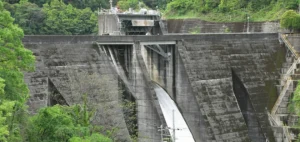After a period of decline, the tidal turbine sector is enjoying a renaissance thanks to renewed support from the French government. This comeback is reflected in the Flowatt project, a tidal turbine park in Normandy that promises to be the most powerful in Europe. Made up of six water turbines with a total capacity of 17 megawatts (MW), this wind farm could supply 20,000 people with electricity. The project, supported by HydroQuest and Qair, has received a significant €65 million grant as part of the France 2030 plan.
The tidal turbines will be installed at a depth of 35 meters in the Raz Blanchard, a very powerful marine current off the coast of La Hague. After two years of testing in Brittany, construction of the first turbines will begin in 2025. These turbines, although smaller and slower than wind turbines, are designed to be unobtrusive and efficient, drawing their energy from the tides.
Considerable energy potential
On a global scale, the tidal turbine sector is seen as a huge source of renewable energy, with an estimated potential of 100 gigawatts (GW). France, considered Europe’s second-largest country in terms of wind energy potential after the UK, is home to a number of promising projects. These include Normandie Hydroliennes’ NH1 project, with an announced capacity of 12 MW, and various projects in Brittany, notably near Ouessant and in the Raz de Sein.
Europe remains at the forefront of this technology, with projects under development in the UK and other countries such as the Faroe Islands. However, international competition is strong, with initiatives in China and the United States. In France, industry is eagerly awaiting the new national energy plan, which should set clear targets for marine energies and launch the first commercial tenders.
Challenges and promising prospects
The development of marine turbines in France is not without its challenges. The industry has yet to prove its competitiveness and achieve attractive production costs. According to Marc Lafosse of the Syndicat des énergies renouvelables (SER), prices could fall below 100 euros/MWh for the first gigawatt installed, or even reach less than 80 euros/MWh, bringing costs closer to those of offshore wind power.
The political context also plays a crucial role. While some politicians, such as MP Jean-Philippe Tanguy, remain skeptical, other legislative initiatives in the Senate are proposing quantified targets for tidal power. The Nouveau Front Populaire, for example, sees this energy as a pillar of France’s energy transition.
The future of marine turbines in France looks promising. Current initiatives, backed by public policy and substantial investment, put France in a good position to become a European leader in this field. Successful projects like Flowatt could pave the way for large-scale commercial developments, strengthening the contribution of marine renewable energies to the global energy transition.






















